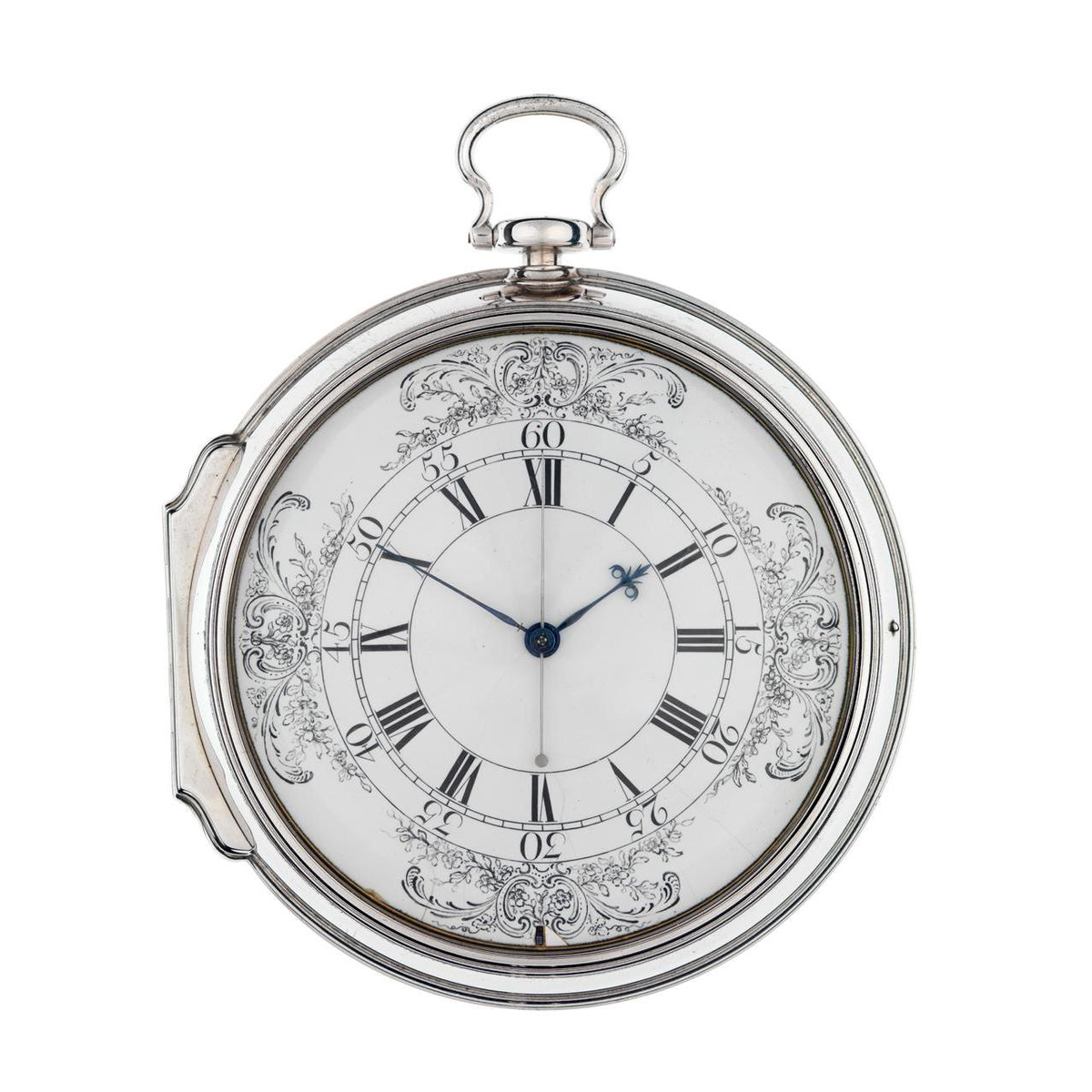A carpenter by trade, John Harrison nurtured a passionate interest in clockmaking, which he learned without any formal instruction, through trial and error. Disregarded, even scorned, by his peers, he would nonetheless change the course of horological history with two major inventions: the bimetallic strip and the marine chronometer; an invaluable aid for ships at sea. Harrison came to public attention for his innovative wooden clocks and in 1720 was commissioned to build one for the stables in Brocklesby Park, Lincolnshire. The clock, which he made out of oak and lignum vitae, incorporated a grasshopper escapement, a mechanism Harrison invented, in a frictionless movement that required no lubrication. A few years later, between 1725 and 1728, he devised a further three clocks for which he developed a bimetallic strip that was unaffected by changes in temperature – enabling considerably greater precision. Supported by watchmaker George Graham and astronomer Edmond Halley, in 1730 Harrison embarked on the greatest endeavour of his lifetime: to build a marine chronometer.
For the European powers of the eighteenth century, economic interests lay in the colonies, with their riches to conquer and opportunities for trade. More than ever, command of the oceans and maritime routes was of vital importance. First, though, a problem had to be resolved: how to plot longitude when navigating in the vastness of the ocean. Without a sufficiently reliable timepiece to precisely measure the time taken to sail between two points, ships were in constant danger of drifting off course and being wrecked on the rocks that appeared in their path. In 1714 the British Parliament passed the Longitude Act which offered a prize of £20,000 – a colossal amount, equivalent to £3 million in 2020 – "for such person or persons as shall discover the longitude at sea". The Academy of Sciences in Paris offered a similar prize four years later.
The greatest watchmakers set about the task with, in the background, centuries of rivalry between the British and the French. The solution finally emerged from the brilliant mind of John Harrison. After twenty years spent working on the H1, H2 and H3, each more precise and reliable than its predecessor, in 1759 Harrison presented his now famous H4; an extraordinary marine chronometer resembling a large pocket watch, measuring thirteen centimetres in diameter and weighing one and a half kilos. A sea trial in 1760 demonstrated that Harrison's chronometer fulfilled all requirements. Even so, Parliament and the Board of Longitude were reluctant to award him the prize. It would take a further twenty years, the H5 and the intervention of George III for John Harrison to receive the acknowledgement he was due.
c. 1720
Invention of the temperature-compensated gridiron pendulum for clocks, in steel and brass.
c. 1720
Invention of the grasshopper recoil escapement for clocks. Difficult to adjust, it was used mainly by Harrison himself.
1735
Harrison’s first marine chronometer, the H1.
1761
Invention of a temperature-compensation device that uses a bimetallic strip to control the active length of the balance spring.
1761-1765
After two sea trials, the precision of the H4 marine chronometer was shown to exceed that required by the Longitude Act. Harrison received an initial sum of £10,000.
1773
Parliament awarded John Harrison, now 80 years old, £8,750 for his H5 marine chronometer.

